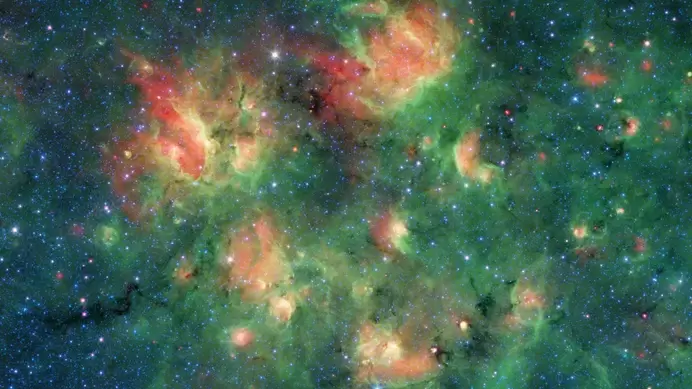Authors: Dr Venkatesh T Lamani, Swapnil K SinghBMS College of Engineering, Bull Temple Rd, Basavanagudi, Bengaluru, Karnataka, India 560019 Bubbles are a common occurrence in liquids, ranging from the simple rising ones to the turbulent ones that playfully form. However, behind their seemingly innocent façade lies a lesser-known and more complex side—cavitation bubbles. These unassuming bubbles possess the capacity to wreak havoc, generating destructive shock waves, emitting bursts of light, and even exhibiting unique chemical properties. In this article, we will delve into the intricate mechanics of cavitation bubbles, shedding light on their rapid collapse phase and the fascinating behaviours that accompany it. Cavitation bubbles undergo a sequence of stages, each contributing to their overall behaviour. It all begins with the inception of minuscule gas or vapor pockets known as nuclei within the liquid. These nuclei can emerge from various sources such as dissolved air, impurities, or surface irregularities. As the liquid traverses areas of lower pressure, these nuclei gradually expand into larger bubbles due to vaporisation—a process akin to boiling, yet without the actual boiling point being reached. The movement of cavitation bubbles is governed by the interplay between forces within the fluid flow and the intrinsic characteristics of the bubbles themselves. Forces such as drag, buoyancy, pressure gradients, and interactions with solid surfaces dictate their trajectories. Some bubbles ascend due to buoyancy, while others become entrapped in turbulent flows, swirling unpredictably. Along their trajectory, pressure gradients act as guiding forces, steering the bubbles in specific directions. Yet, the most intriguing facet of cavitation bubbles lies in their eventual collapse. As these bubbles transition from low-pressure regions to areas of higher pressure, they face escalating external pressure. This rapid compression leads to their dramatic collapse, referred to as the bubble collapse phase. During this phase, the confined space witnesses the generation of extreme pressures and temperatures, resulting in the formation of shock waves, microjets, and even flashes of light. This release of energy significantly contributes to the inherently destructive nature of cavitation, capable of causing damage to nearby surfaces. The collapse transpires in a fleeting instant, lasting only microseconds. The energy unleashed results in temperatures surpassing the sun's surface heat and pressures that rival the deepest ocean trenches. Shock waves and microjets formed in this dramatic event have the power to erode metals, damage propellers, and influence chemical reactions within the surrounding liquid. Researchers are particularly enthused by the potential applications of this released energy, spanning from catalysing intricate chemical reactions to advancing medical treatments. Despite extensive research, comprehending the intricate dynamics of cavitation bubbles remains a formidable challenge. The intricate dance of fluid dynamics, coupled with the unpredictable nature of turbulence, renders achieving comprehensive understanding an ongoing pursuit. Researchers employ numerical simulations and experiments to gain insights, yet many aspects of this phenomenon are still awaiting exploration. Unravelling the mechanisms underlying bubble collapse and its aftermath stands as a continuing endeavour, driven by the desire to harness its energy while mitigating its potential harm. In a world where bubbles are often synonymous with playfulness, the revelation of cavitation bubbles casts them in a more intricate role. These unpretentious entities emerge as essential players in the intricate symphony of fluid dynamics. With each revelation, we inch closer to utilising their potential for technological advancement and gaining mastery over the hidden intricacies within the depths of liquids. However, the connection between cavitation bubbles and the cosmos goes beyond engineering systems. They hold significance within the cosmic realm, further establishing the link between the microscopic and the cosmic. Let's explore some instances of natural cavitation occurring within the vast expanse of astronomy: Supernova Explosions: Massive stars, when they expend their fuel, undergo supernova explosions, releasing colossal energy. This energy can induce cavitation within the interstellar medium. The ensuing shock waves create pockets of hot gas, subsequently triggering the formation of new stars. Active Galactic Nuclei: Certain galaxies harbour supermassive black holes at their cores. These black holes draw in surrounding gas, heating it up and forming bubbles of hot gas. These bubbles can, in turn, generate cavitation within the intergalactic medium. Cosmic Rays: High-energy particles like cosmic rays, as they collide with gas molecules in interstellar or intergalactic space, can initiate cavitation. The collision-induced energy leads to the formation of bubbles of hot gas and the propagation of shock waves. Star Formation: In regions where interstellar gas and dust are densely concentrated, gravity causes compression and heating, resulting in cavitation. This process sets the stage for the birth of protostars and subsequent star formation. Gamma-Ray Bursts: Brief and intense bursts of gamma-ray radiation, known as gamma-ray bursts, occur during massive star collapses or neutron star mergers. The energy released can trigger cavitation within the interstellar medium, generating shock waves in the process. Accretion Disks: When gas falls into compact celestial objects like black holes or neutron stars, it forms accretion disks. The intense gravitational forces and heating within these disks lead to gas cavitation, forming bubbles of hot gas. Galactic Winds: Galactic winds, powered by phenomena such as supernova explosions and active galactic nuclei, expel gas and dust from galaxies. The energy released in these events can induce cavitation within the interstellar medium, giving rise to pockets of hot gas. As we direct our gaze towards the cosmos, it becomes evident that cavitation bubbles transcend earthly boundaries. They serve as a bridge, connecting the microcosm with the macrocosm, offering a profound reminder of the intricate interdependence of all things. Whether manifested as microscopic bubbles within liquids or as grand celestial phenomena, cavitation bubbles underscore the role of energy, pressure, and dynamics in shaping the intricate systems that weave the fabric of our world and the universe beyond.
Comments are closed.
|
Welcometo the InnovaSpace Knowledge Station Categories
All
|
InnovaSpace Ltd - Registered in England & Wales - No. 11323249
UK Office: 88 Tideslea Path, London, SE280LZ
Privacy Policy I Terms & Conditions
© 2024 InnovaSpace, All Rights Reserved
UK Office: 88 Tideslea Path, London, SE280LZ
Privacy Policy I Terms & Conditions
© 2024 InnovaSpace, All Rights Reserved


 RSS Feed
RSS Feed